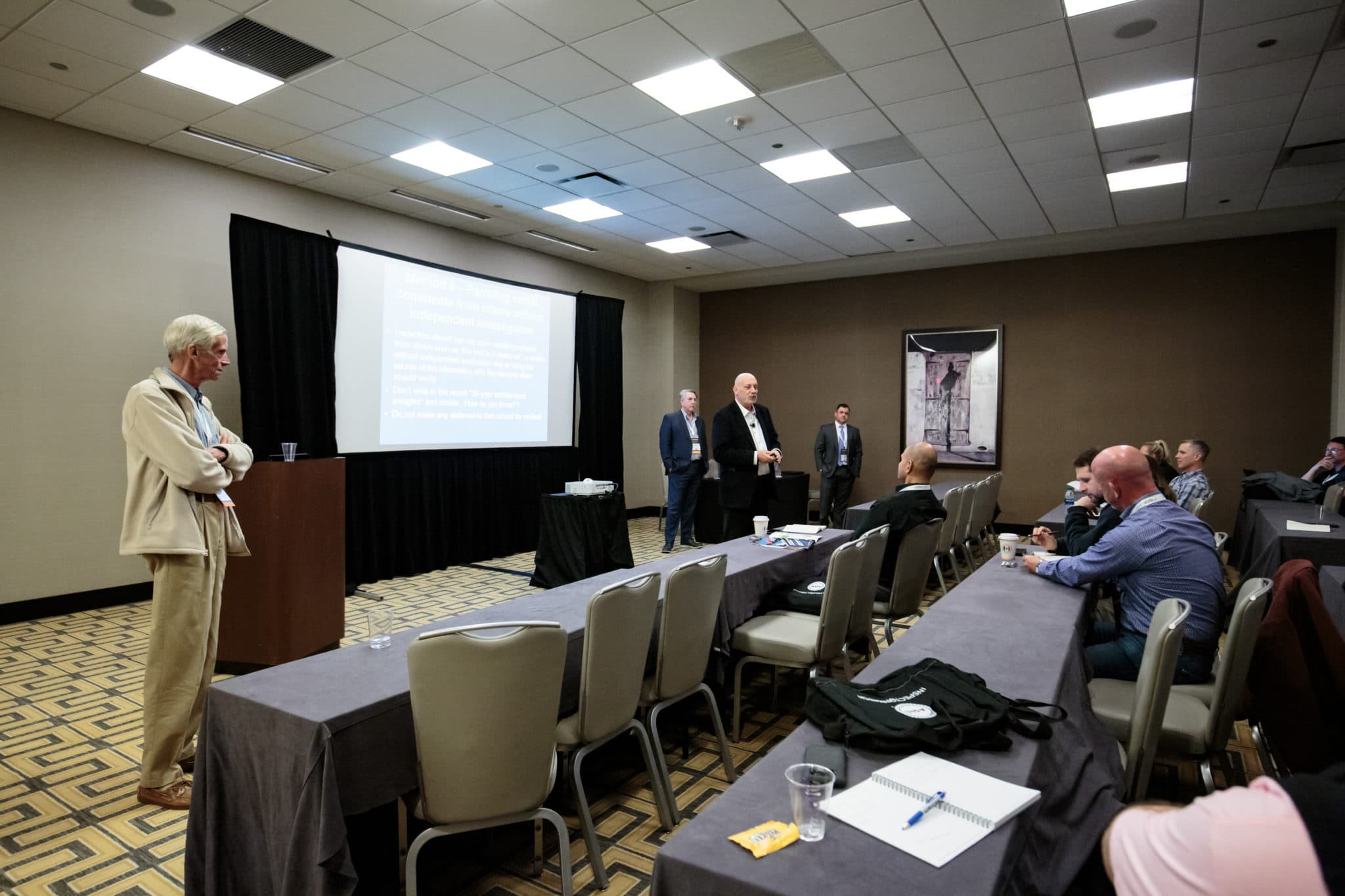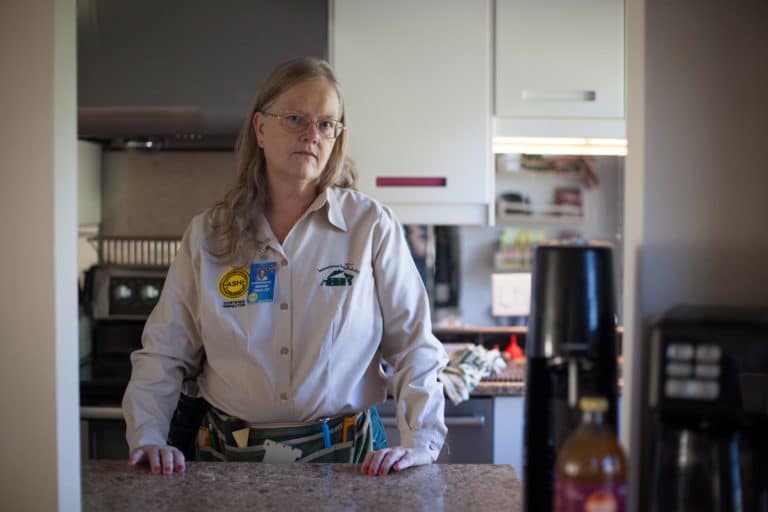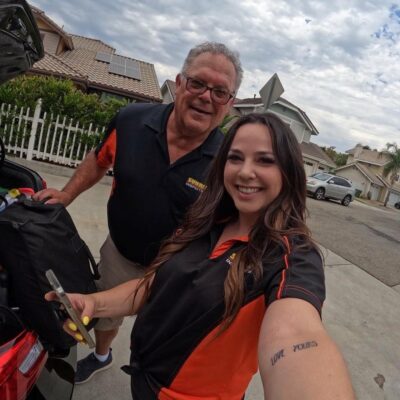Bob Pearson: The Godfather of home inspection insurance
Last Updated November 9, 2023

 When Bob Pearson sees a need, he fills it. That’s what he did when he was working as Vice President of Operations for Perkins Restaurants & Bakery and Country Kitchen Restaurants. And that’s what he did when he owned his own home inspection firms. In both cases, there was a need for better insurance and risk management solutions that catered to their specific industries. So, Pearson helped create and then sell these specialized insurance programs.
When Bob Pearson sees a need, he fills it. That’s what he did when he was working as Vice President of Operations for Perkins Restaurants & Bakery and Country Kitchen Restaurants. And that’s what he did when he owned his own home inspection firms. In both cases, there was a need for better insurance and risk management solutions that catered to their specific industries. So, Pearson helped create and then sell these specialized insurance programs.
“Bob invented E&O [for home inspectors],” said Nathan Thornberry, Owner of Residential Warranty Services, Inc. “He created the market for something that wasn’t a popular idea where [it was] not required by licensing, and [he] paved the way for the market we have today.”
That industry insight Pearson demonstrates comes from experience. Having performed over 10,000 home inspections himself, Pearson has a unique and unparalleled understanding of home inspecting. As such, he was able to use his knowledge to create an insurance program for a profession that insurers hadn’t really figured out.
“I fell into home inspector insurance when I realized there was a need for it,” Pearson said. “Underwriters really didn’t understand what a home inspection was. That’s why we decided to do our own program.”
Developing the solution.
By “we” he means he and the insurance agent for the National Association of Home Inspectors (NAHI), which became a division of the International Association of Certified Home Inspectors (InterNACHI) in 2012. In the late 80s, the two developed a professional liability (or errors and omissions) insurance program catered to inspectors. The program featured unique coverage endorsements, like the first ever referring party indemnification rider for real estate agents. And it offered inspectors coverage for a reasonable rate.
“The first time I got a quote for E&O insurance in the late 80s, it was like $10,000 for annual coverage. I think [the price was so high] mainly because [the insurance carrier] just didn’t understand what we did,” said Mike Casey of Michael Casey & Associates, a client and colleague of Pearson’s and a past president of the American Society of Home Inspectors (ASHI). “Bob understands what we do because he’s done it…. Bob was able to get reasonably priced insurance specifically for home inspectors.”
Joining Allen Insurance Group.
Then, in 1992, Pearson joined Allen Insurance Group to better proffer the program to inspectors that needed it. He developed relationships with home inspection associations nationwide, including ASHI, the California Real Estate Inspectors Association (CREIA), the Florida Association of Building Inspectors (FABI), and InterNACHI.
 “[Bob is] probably the furthest thing from a pushy salesman,” said Nick Gromicko, InterNACHI’s Founder. “He always gives great advice on how to manage risk.”
“[Bob is] probably the furthest thing from a pushy salesman,” said Nick Gromicko, InterNACHI’s Founder. “He always gives great advice on how to manage risk.”
In fact, Pearson was one of the first people to teach home inspectors about risk management. He began lecturing at various national and regional association conferences. Additionally, he published several articles on risk management, including those available in the ASHI Reporter, some of which he authored with Casey.
“[Bob] was visible and he was obviously dedicated to helping some inspectors,” Casey said. “Helping people to understand the coverage and what the differences are, how to help reduce claims…and how to handle a call back…Being able to get [that information] out to inspectors by writing articles and doing presentations [really impacted the industry].”
Partnering with us.
Today, Pearson’s partnered with us to give his clients access to our insurance benefits.
“From their beginnings 10 years ago, I have admired InspectorPro and have become great friends with their team. After 27 years of selling insurance to home inspectors, it is my opinion that the InspectorPro Insurance product is far superior to anything else on the market today,” Pearson said. “InspectorPro has top-notch customer service and an in-depth knowledge of the risks that face home inspectors. So, I’m excited for our insureds to benefit from the InspectorPro difference.”
As partners, we value Pearson’s continued contribution to insurance and inspection industries. In this article, we highlight a few of the risk management lessons Pearson considers most valuable.
Enter the industry prepared.
While it may seem counterintuitive, as a salesman, Pearson has discouraged people from entering the home inspection industry. While he loves the profession, he recognizes the financial risk associated with starting your own business firsthand. As such, he always hopes to give potential new inspectors realistic expectations so they know what it takes to succeed.

When entering the industry, Pearson recommends not starting your own inspection company at once. Rather, he recommends inspecting for an existing firm.
“Go to work for somebody else for a while and see if this is really what you want to do,” Pearson said.
In addition to discovering whether inspecting is the career path you want, you can save on the exorbitant cost of starting a business. According to Pearson, people should only start their own inspection company if they’re prepared to go at least six months without income. The first years of business, Pearson explained, are incredibly hard, so it’s important to have savings.
Pay-per-inspection programs.
Pearson also cautions inspectors against money-saving shortcuts. As the pioneer of the pay-per-inspection program, Pearson hoped that he’d be able to save new home inspectors on one of the larger upfront costs: insurance. However, he was surprised to find that the program didn’t really help inspectors stay in business. Rather, it foreshadowed which inspectors were more likely to go out of business.
“The attrition rate of the people buying pay-per-inspection policies—and they went to school, their backgrounds look good, they came from the trades—the attrition rate is over 99 percent,” Pearson said. “A lot of them just had one, two, maybe three inspections [at the end of the year]. And there are two issues there. One, they’re not gaining any experience by just doing a handful of inspections. And two, they’re not going to survive.”
So, to those who are considering entering the inspection industry, Pearson encourages them to look at their finances and make sure they’re prepared.
Get your pre-inspection agreement signed prior to every inspection.
One of the biggest changes that’s occurred since Pearson began insuring inspectors is the requirement to get pre-inspection agreements signed prior to every inspection. The reason for the change: Signed contracts protect home inspectors against claims.
Your pre-inspection agreement is your first line of defense. It is your contract between you (the home inspector) and your client (the person[s] for whom you are performing a property inspection). The agreement’s purpose is to protect both you and your client by setting correct inspection expectations, including services you’ll perform and the payment they’ll make.
However, for your pre-inspection agreement to help you, it has to be signed. Without a signature, you cannot prove that your client concedes to your terms.
“If you don’t get [your pre-inspection agreement] signed, we have no ammunition,” Pearson said.
Contracts of adhesion.
Additionally, it isn’t as simple as just getting the contract signed. Your clients must sign your pre-inspection agreement before you start inspecting.
“Now, if you don’t get it signed before you do the inspection—which is a requirement in many states—we’re looking at a contract of adhesion, and that can make it very difficult to defend.”
In other words, an inspection contract can only contain things that diminish a client’s ability to sue for what they want and how they want—like a limitation of liability or an arbitration clause—if both parties—the inspector and the client—agree before the inspection. Otherwise, the court can argue the client never agreed to the inspection’s terms and throw the agreement out.
Inspecting without an agreement, or having clients sign your contract after you begin the inspection, isn’t worth the cost. Make your pre-inspection agreement a priority by getting it signed before every inspection.
Learn more about the importance of getting your pre-inspection agreement signed ahead of time in our article “Behind the ‘Pre’ in Pre-Inspection Agreement.”
Take lots of pictures.
 “The biggest impact that we’ve seen within the last 10 years now has been everybody’s taking tons of pictures—even pictures [of areas] that don’t have problems,” Pearson said. “[Photos of non-defect areas have] allowed us to get out of a lot of claims simply because we could demonstrate that nothing was there.”
“The biggest impact that we’ve seen within the last 10 years now has been everybody’s taking tons of pictures—even pictures [of areas] that don’t have problems,” Pearson said. “[Photos of non-defect areas have] allowed us to get out of a lot of claims simply because we could demonstrate that nothing was there.”
While they may not end up in your report, pictures of non-defect areas provide a snapshot in time. They testify of the home’s condition on the day of the inspection. That documentation can assist you in defending against allegations regarding defects that occurred post inspection.
In one of our recent case studies, a home inspection client alleged that their home inspector failed to identify significant moisture damage in the wall adjacent to the bathroom. The photographs the claimant provided showed signs of an issue that had existed for quite some time. Upon reviewing his inspection photos, the home inspector discovered that the defect was obscured by a blanket rack at the time of the inspection. That picture proved that the issue was concealed and, therefore, not identifiable at the time of the inspection. (You can read the full story here.)
Be sure to take pictures of, not just what’s wrong with the property, but what’s right. After all, you never know if the client will point the finger at you when functioning systems go awry in the future.
Learn more about the importance of taking photos in our article “3 inspection photos you should take to manage your risk.”
Offer mold inspections.
Through reviewing hundreds of claims and reports, Pearson has recognized many of the same trends in complaints that we have. As we’ve reported previously, mold claims are the fourth most common type of allegation against home inspectors. And interestingly, it’s not the inspectors performing mold tests that are at the greatest risk of receiving a claim; it’s the ones who aren’t.
“Mold claims are still a major ongoing issue for us in the industry,” Pearson said. “It they’re not doing the testing, they’re going to get the claims. If they’re doing the testing, [they’re less likely to] get the claims.”
How can you prevent mold claims? Based on the trends we and Pearson have observed, you are less likely to receive a mold claim if you offer mold testing. Even if you subcontract the service out, or even if your client declines the testing, simply offering helps defend against frivolous mold allegations.
“Have [your clients] sign rejecting the mold testing. That’s almost your Get Out of Jail Free card,” Pearson said.
Not interested in offering mold testing of any kind? You can still protect your business by including an advisement stating that mold isn’t included in your inspection in both your pre-inspection agreement and report. Our claims team recommends making your advisement bold or in another color font and having your clients initial by it in your contract. You may also consider carrying a mold endorsement for coverage against frivolous mold claims. (See the section “Non-inspection isn’t protection” in our article “3 most common insurance policy pitfalls.”)
Learn more about mold allegations in our article “How to avoid a mold claim.”
Serve your clients.
 If Pearson is an example of any principle, it’s this one: He knows and serves his clients.
If Pearson is an example of any principle, it’s this one: He knows and serves his clients.
“My business was always big enough, so I wasn’t worried about writing one more account or not,” Pearson said. “My goal was to take care of the inspector.”
Members of the inspection community recognized Pearson’s focus on his clients.
“Bob is a guy that gets things done. And despite other (larger) opportunities in transport, [he] made the time each and every day to serve the inspection community,” Thornberry said. “Having worked hand in hand with him on claims issues from every corner of the country, I can say without a doubt that he is the best in the business.”
His approach wasn’t lost on his clients either. According to Adam Jaynes, the InspectorPro broker assisting Pearson’s insureds, many of Pearson’s clients feel that he really looked out for them.
“It’s been great to work with Bob’s inspectors,” Jaynes said. “So many of them have talked about how much they trusted and valued his risk management guidance, because he was a home inspector. He knows the business and knows what it’s like to get a complaint.”
Who your clients are.
How can you implement the same methodology in your inspection business? Look out for your clients—not other members of the real estate transaction.
“Remember who your client is. It’s not the real estate agent. It’s the person buying the house or the person who wants to have a pre-listing inspection done,” Pearson said.
According to Pearson, focusing too much on appeasing the real estate agent can lead you to writing subpar inspection reports—ones that bury key information or don’t report on deficiencies strongly enough. Putting your clients first protects them and you.
“You’re there to educate the buyer about the biggest investment of their lifetime. That’s it. You’re not there to make the real estate agent happy,” Pearson said.
Protect your home inspection business.
How do you protect your home inspection business? Consider implementing the risk management tips Pearson suggested in this article. Also, be sure to carry the coverage Pearson helped bring to the home inspection industry: errors and omissions (E&O) and general liability (GL) insurance. Apply for a quote with us here.
To learn more about our strategic alliance with Allen Insurance Group, read our press release.
Read some of Pearson’s risk management articles for the ASHI Reporter below:
- “Home Inspector Lessons in Risk Management”
- “You Can Win with Defensive Report Writing”
- “Home Inspector Insurance 101”
Like what you read? Read some of our other home inspector spotlights.
- How to be a unicorn: A guide to differentiating your home inspection business
- How to run a successful small business with home inspector Joe Cook
- From curtains to crawlspaces: How one woman joined the home inspection industry
- Military veteran finds joy in educating home buyers
Have a home inspector you’d recommend for our home inspector profile series? Let us know! Email our marketing team with the name of the inspector, their contact information, and how their story could inspire others.





